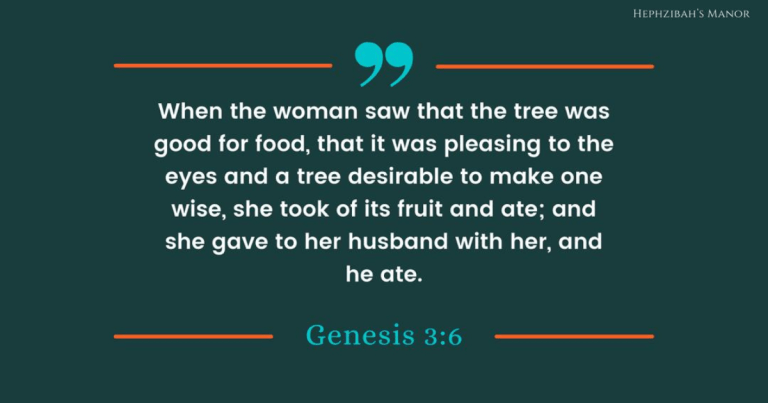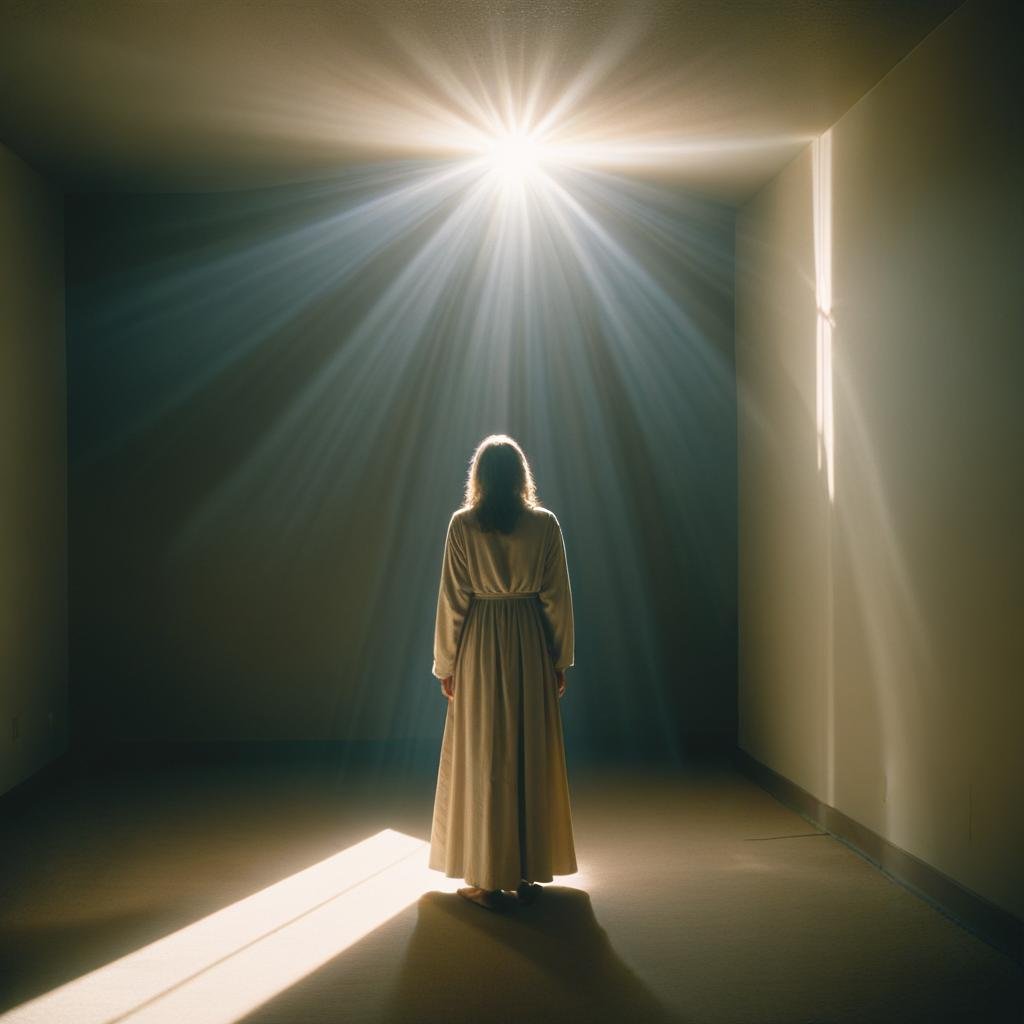The ability to set a picture before us is an innate ability. From the first woman Eve, to children, everyone can set a picture and run with it. When Eve was tempted, I believe she imagined a world where she would be like God, being able to discern between good and bad and the many other perks that came with being God.
In Genesis 3:6, the Bible says Eve was convinced. She saw that the tree was beautiful and its fruit looked delicious, and she wanted the wisdom it would give her. So she took some of the fruit and ate it. Then she gave some to her husband, who was with her, and he ate it, too.
This scripture provides one of the clearest illustrations of the stages from envisioning to executing what we see. Eve saw According to what she saw in her mind’s eye, she desired. And then she acted on that desire: she took
Consider the example of a job
You may have been drawn to a position because of the stability, peace, comfort, and ease that a higher salary seemed to promise.
The higher the pay, the more eager you were to apply. You told yourself, “If I get this job, I’ll finally be able to pay my school fees, raise the capital to start my business, provide for my family, or at least cover my house rent.” You set a picture of financial security before you.
However, in your pursuit of financial security and independence, you took on jobs that landed you in way over your head.
Hopefully, you got or are able to get out before you pay a heavy sacrifice on the altar of your career or business.
Children are not Exempted
Even children grasp the concept of setting a picture before them. You can often motivate a child to do something as simple as homework by promising them a reward—like ice cream, an hour of screen time, or time to play outside. A child, focused on that reward, will complete the task with incredible speed and energy. In fact, not even a cheetah could match the speed of a child who has a reward in sight! The picture they’ve set in their mind drives them to complete the task with determination and enthusiasm.
Biblical Examples of Individuals Who Set a Better Vision Before Them
We have already examined Jesus Christ as the perfect example of someone who set a clear vision before him. Now, let’s shift our focus to ordinary individuals from the Bible—people with the same frailties, struggles, and imperfections we experience—and see how they, too, set a better picture before them and overcame.
The Woman with the Issue of Blood
She thought, “If I may just touch His garment, I shall be healed.”
She set a clear picture before her—a picture of her healing. In her mind’s eye, she saw herself whole and restored. She imagined the entire scene, playing it out in her thoughts. Then, with determination, she acted on that picture. She pressed through the crowd, fought her way forward, and finally touched the hem of Jesus’ garment, turning her faith into reality. (Matthew 9:21)
Queen Esther
Esther set in her mind’s eye a picture of her people being saved, of approaching the king and getting his favor. She set that picture so strongly in her mind that she was willing to risk her life, trusting that God was faithful.
She placed the welfare of her people above her own, valuing their lives more than hers. Just like Jesus, she was willing to risk her life, believing in the purpose God had for her. She trusted Mordecai’s words that perhaps God had placed her in that position “for such a time as this.”
With that powerful vision set before her, she boldly declared, “If I perish, I perish”. (Esther 4:16).
Mary, the Mother of Jesus Christ
Mary had to set her eyes on something greater than herself to be determined to endure the ridicule that came with not being a virgin, let alone getting pregnant outside of marriage. The Jews regarded it as such a great sin that Joseph was going to quietly disengage her. She risked her relationship, her reputation, and put everything on the line to carry our Lord.
At that time, people couldn’t comprehend the possibility of a woman getting pregnant without having sexual relations with a man, so it definitely wouldn’t have been a story that could easily fly.
But you see, the Jews had also heard stories, prophecies, and read scriptures about the Messiah who was to come and redeem them, though they couldn’t fully comprehend how or when He would appear. I believe Mary set a vision before herself—a picture of the Messiah redeeming her people. She saw it in her mind’s eye and told herself, “This is a worthy sacrifice.”
I imagine she told herself, “The suffering and the shame I am enduring now are not worthy to be compared to the glory that shall be revealed in the coming days!”
And so, with that picture, she said to Angel Gabriel, “I am the handmaiden of the Lord, let it be done to me as you have said!” (Luke 1:38).
All through her life, I believe she had to set that picture before her. She probably had to remind herself of that glorious ending when they traveled, discovered they had lost Him, and found Him preaching in the temple. When He was beaten, spat upon, shamed, and crucified, the pain must have been unbearable. But, oh, for the joy set before her!
Abraham
What did Abraham see that led him to leave his father and mother and venture to a land he didn’t know? He had no idea how to get there, where it was, or what the people in that land looked like. He left the familiar for the unfamiliar.
But a vision compelled him into obedience.
Hebrews 11:10 tells us that Abraham was “looking forward to the city with foundations, whose architect and builder is God.”
Even in his old age, when he and his wife were past the age of childbearing, Abraham held on to the picture God had painted for him in Genesis 12:1-3. That picture gave him the courage to be willing to sacrifice his only son, Isaac. At this point, he had experienced God’s faithfulness enough to trust that whatever God promised, He would fulfill.
Abraham believed in God’s promises so deeply that, even though he wouldn’t see his descendants multiply in his lifetime, he trusted that God would be faithful to His word.
In Hebrews 11:35-40, we read about others who held on to the picture of eternal life and resurrection, despite never seeing it in their lifetime. Their faith in God’s promises endured beyond the temporary, pointing to the eternal reality.
Apostle Paul
This man endured so much for visions that many wouldn’t dare to imagine, let alone suffer for. His visions may even seem abstract or far-fetched to the man whose understanding God hasn’t opened.
Paul is a man who endured countless beatings, imprisonment, and hardships, yet he remained unwavering. He is the one who said, “I reckon that the sufferings of this present time are not worthy to be compared to the glory that shall be revealed in us.” (Romans 8:18).
He set his eyes on eternal life, on bringing many to Christ, on preaching the gospel, and seeing lives transformed.
In Philippians 3:13-14, Paul wrote, “Brothers and sisters, I do not consider myself yet to have taken hold of it. But one thing I do: Forgetting what is behind and straining toward what is ahead, I press on toward the goal to win the prize for which God has called me heavenward in Christ Jesus.”
In 2 Corinthians 4:16-18, he said, “Therefore we do not lose heart. Though outwardly we are wasting away, yet inwardly we are being renewed day by day. For our light and momentary troubles are achieving for us an eternal glory that far outweighs them all. So we fix our eyes not on what is seen, but on what is unseen, since what is seen is temporary, but what is unseen is eternal.”
Naomi and Ruth
In the case of Naomi, Ruth 1:6 tells us that Naomi heard in Moab that the Lord had come to the aid of His people in Bethlehem by providing food for them. Upon hearing this, she and her daughters-in-law decided to return home.
In other words, what Naomi heard painted a picture in her mind that stirred a desire, leading her to act on it.
In the end, God’s blessings far exceeded Naomi’s expectations. Not only did He provide for her, but He also blessed her daughter-in-law, Ruth, with the honor of becoming an ancestor of our Lord Jesus Christ.
But it wasn’t just Naomi who saw something. Ruth also saw something that compelled her to say, “Where you go, I will go, and where you stay, I will stay. Your people will be my people and your God my God. Where you die, I will die, and there I will be buried.”
Ruth had heard of Naomi’s God, His mighty deeds, and His power. This painted a vivid picture in her heart—a picture of a God who could provide favor, mercy, and provision. Despite being from a people God hadn’t favored and uncertain of how she would be received, Ruth was undeterred. She imagined what it would be like to be under the care of such a God.
I believe that it was God who had mercy on Ruth, painting these pictures in her heart, leading her to the blessings He had prepared for her.
Finally,
Nehemiah
Remember when the Israelites returned from exile to rebuild the ruins of Jerusalem and its temple? They faced immense opposition during this time, but their leader, Nehemiah, remained steadfast.
In Nehemiah 2:17–18, we see what Nehemiah set his eyes on. He rallied the people, saying, “You see the trouble we are in: Jerusalem lies in ruins, and its gates have been burned with fire. Come, let us rebuild the wall of Jerusalem, and we will no longer be in disgrace.”
Nehemiah focused on the vision of rebuilding the temple, restoring their land, and renewing their relationship with God. He understood that if they dedicated themselves to God once again, the disgrace would come to an end.
This vision of restoration and renewal became the joy set before him, providing the strength and determination to remain unshaken in the face of opposition.






